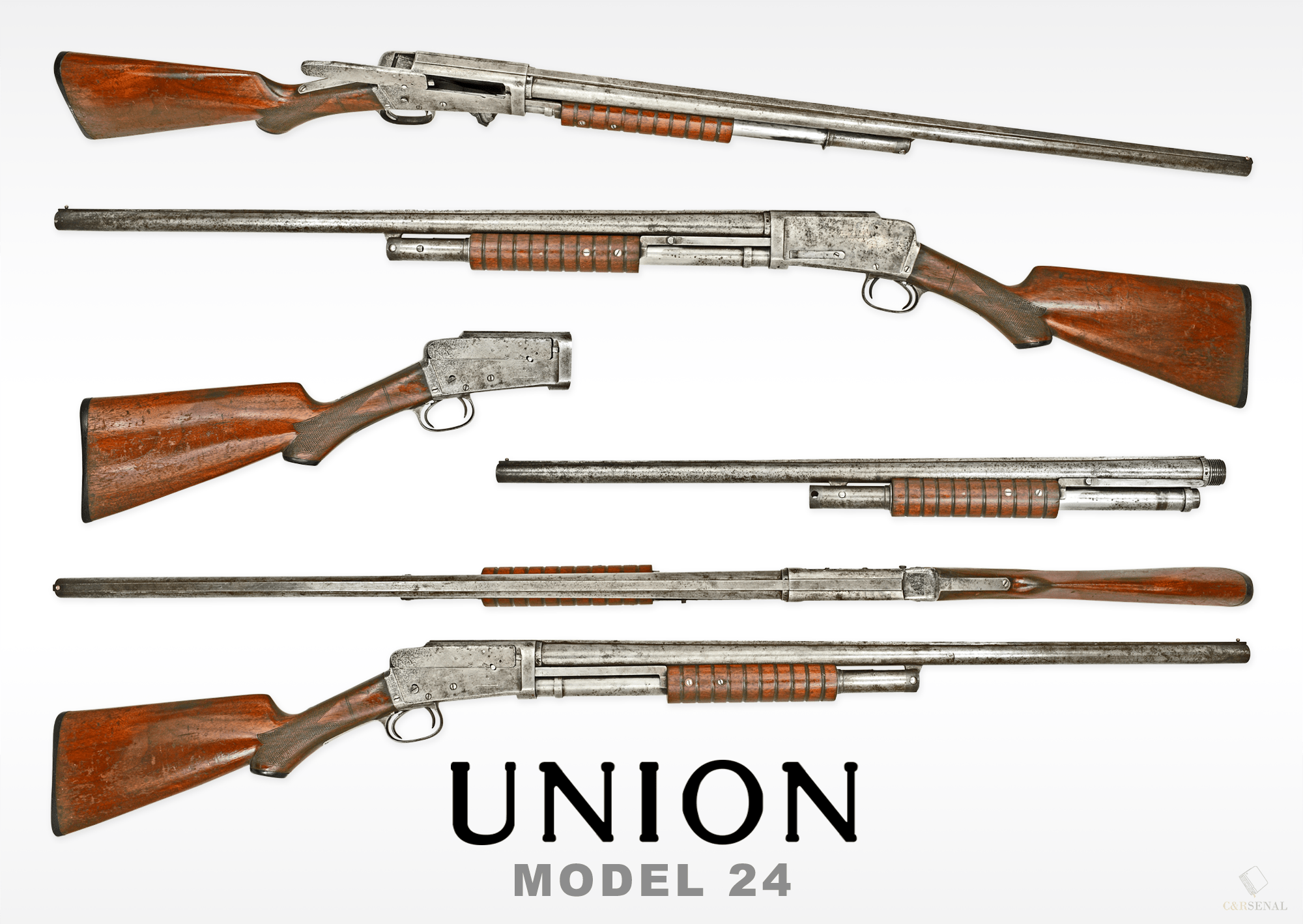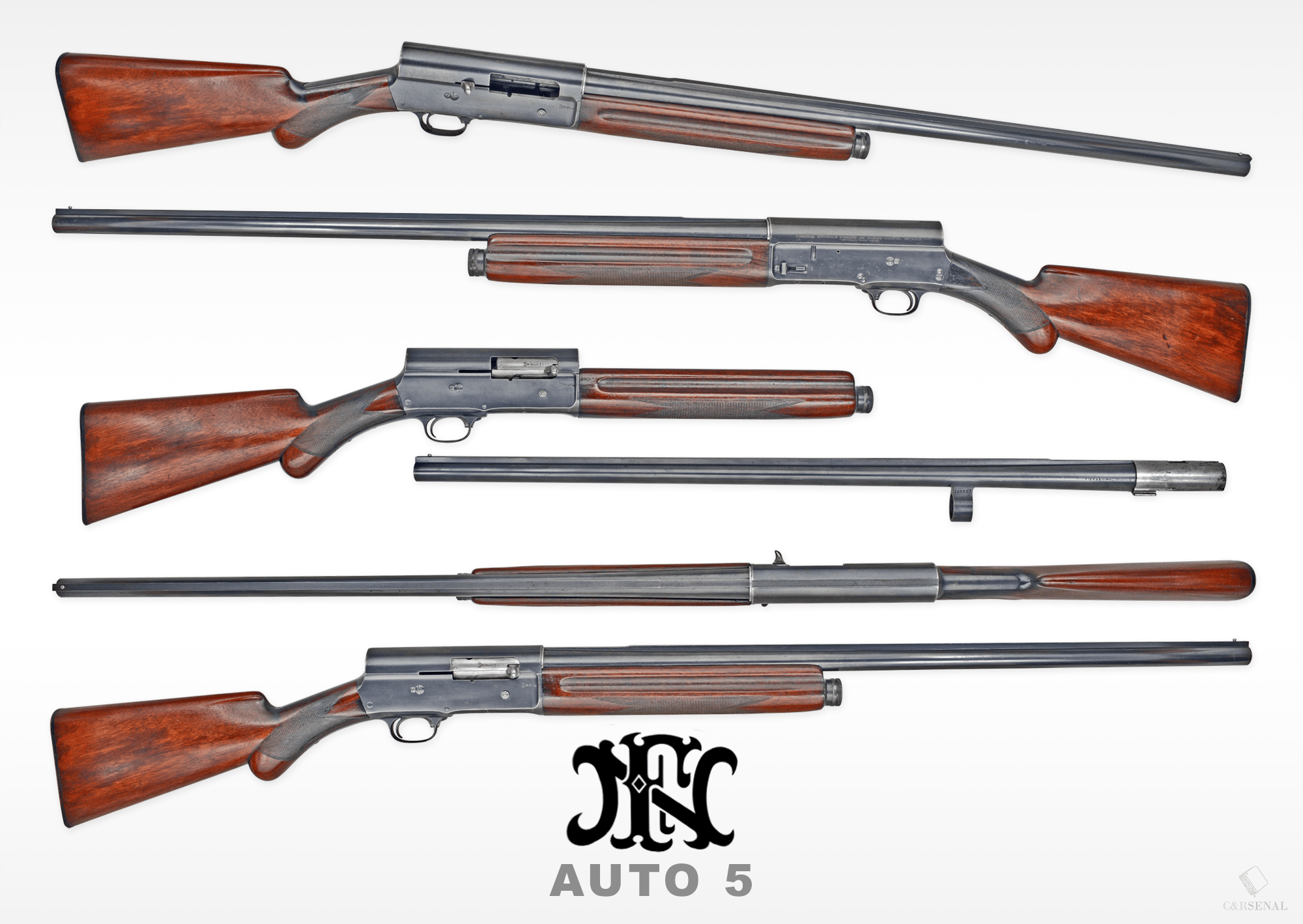Francis Bannerman and his famous Catalog were a retail powerhouse at the turn of the century. Many shooters will recognize the name from his vast stores of discounted military surplus equipment and firearms. By 1890 the Spencer Sporting Arms Company was indebted to Pratt & Whitney for machinery costs and behind in payments. Bannerman bought the debt and foreclosed on Spencer, with the latter having to pay $19,328.41. Since this sum was beyond Spencer Arms’ means, all physical assets and patent rights were ceded to Bannerman. And with that, he went into business making shotguns.
The model 1890 does not differ significantly from the previous Spencer. The most telling feature is the slightly elongated fore-grip made of hard rubber. Examples may also be found with a turned wood grip later in production.
Otherwise this is the same original slide action shotgun. Spencers use a Peabody-like tilting block and feed from a tubular magazine. Loading the magazine can only be accomplished with the pump all the way back and the action open. If the shooter had not pre-loaded the chamber, he would have to pump forward, back again, and then forward once more to ready the gun. While visibly a “hammerless” gun, the Spencer does actually have an exposed hammer spur. It’s the “second trigger” at the front of the trigger guard. This is, essentially, a “tail” integral to the hammer and allows the shooter to decock the action at will.
The pump is fitted with two action bars that serve different purposes. The left-hand bar does the usual job of moving along a camming suface to drive the breechblock downwards, opening the action. The dropping breechblock tips the cartridge stop spring, allowing the next cartridge in the magazine to feed into a compartment inside the breechblock. While this is happening, the right-hand bar acts as an extractor, pulling the case from the chamber and pushing it down the length of the breechblock’s cupped top surface. Near the end of travel the left-hand bar clears the guideway and then presses the hammer back to full cock. Just after the left-hand bar clears, the right-hand bar’s extractor tip settles over a notch in the breechblock. At this moment the block is no longer being guided by anything except a V-spring set in the wrist of the gun. This spring pushes on the inside of the breechblock, causing it to pop upwards, violently ejecting the spent case. Pumping forward causes the right hand action bar to draw the next cartridge, the one now stored in the compartment in the breechblock, into the chamber.
While billed as being a packable gun, the Model 1890 requires a screwdriver for disassembly and there is no provision to keep the follower or spring inside the magazine once taken apart.
Bannerman would stay with the Spencer pricing, charging $45 ($1,281.27 adjusted for 2020) for the base gun, though Damascus barrels were standard. Given that this was $20 more than the Winchester lever action, it did not take over the market and would quickly find a competitor entering the pump action market.



